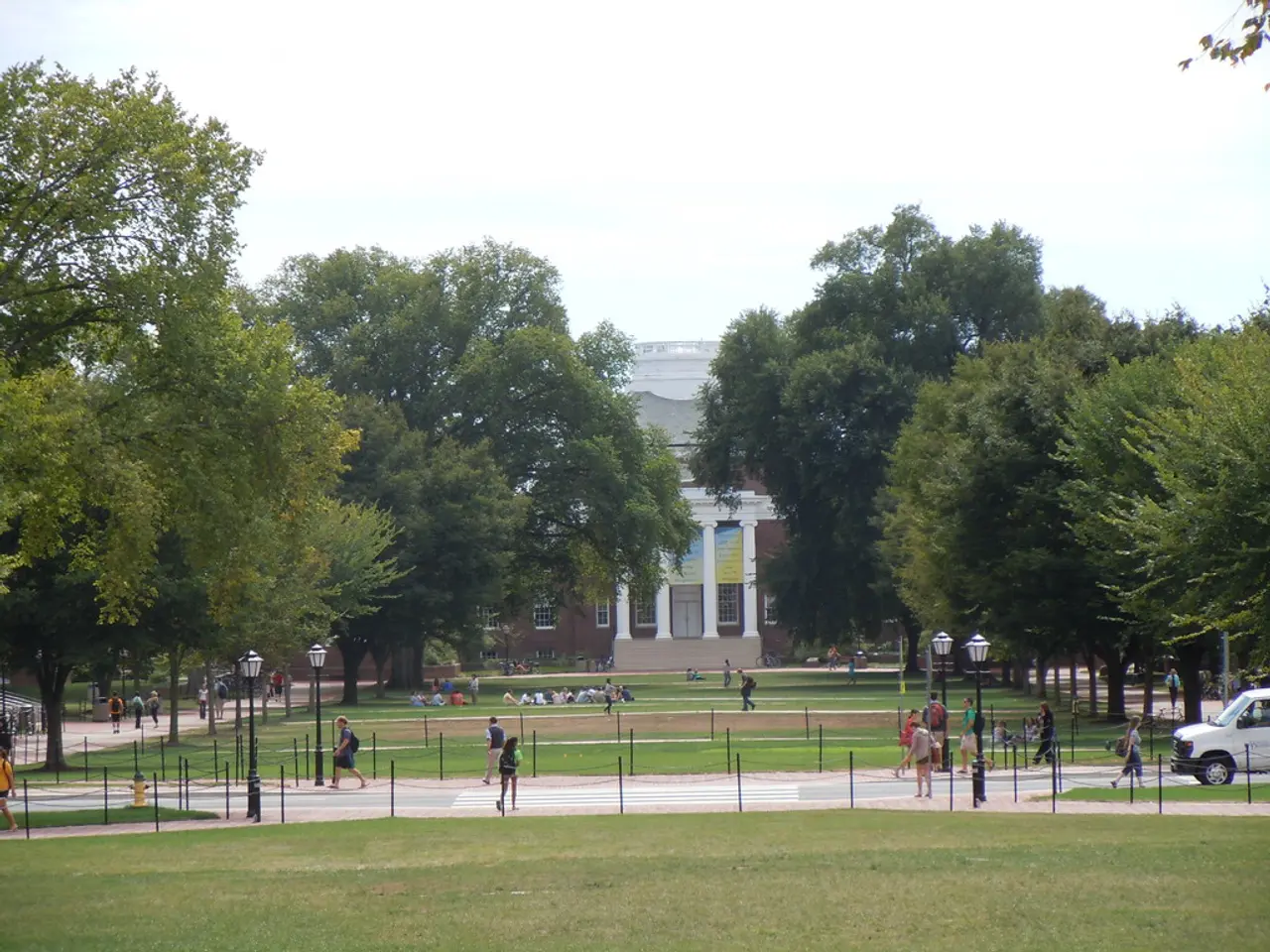"Shrinking Opportunities for Rural Students: Colleges Narrow Down Offered Majors Leading to Dismissal"
In the vast expanses of America's heartland, a silent crisis is unfolding. Rural Americans are facing a growing disparity in access to higher education, as institutions struggle to maintain their academic offerings and financial stability.
The State University of New York at Fredonia, along with many other rural-serving universities and colleges, is facing a challenging reality. The large-scale cuts to majors are primarily driven by significant funding reductions, especially in federal budget proposals. These institutions, which serve small, often under-resourced populations, rely heavily on government funding and support. When budget cuts occur, these colleges often must make difficult decisions such as slashing academic programs, reducing personnel, and cutting student support services to survive.
One specific reason for these cuts is the proposed federal budget cuts, notably affecting tribal colleges that serve many rural communities. These cuts threaten to shutter already cash-strapped colleges, force personnel and program reductions, and limit access to education in rural areas.
Another factor is the dependence of rural schools and colleges on federal funding due to small local tax bases. Reduction in federal dollars leads to fewer teachers, less diverse curriculum offerings, and diminished resources for students who often face economic hardship. This creates a ripple effect, forcing schools to reduce services, including transportation and program options.
Economic challenges in rural areas make it difficult for colleges to maintain diverse and broad academic offerings without sufficient funding. These institutions also often serve as economic engines in their regions by providing jobs and sustaining local economies, which funding cuts undermine.
Moreover, disparities in tax policies and economic supports benefit large wealthier agricultural and corporate interests, while small rural institutions and family farms face higher burdens and less stable funding over time. This economy-wide impact also pressures rural educational institutions' financial base.
For tribal colleges in particular, funding cuts not only affect education programs but also violate treaty responsibilities and erode long-term workforce development in tribal communities, potentially devastating local economies and Indigenous students' opportunities.
Shamya Jones, a student from rural Mississippi, transferred to Delta State University, a four-year campus closest to her home. However, she is now hearing about the music department at Delta State being phased out. Many other universities that serve rural students are eliminating large numbers of programs and majors, blaming plummeting enrollment and financial crises.
In the face of these challenges, students like Holly Buroughs, a physics major at the University of North Carolina Greensboro, express concern about the future of their universities. Youngstown State University in Ohio, St. Cloud State University, and the University of North Carolina Greensboro itself have all made significant cuts to their academic programs.
These cuts are disproportionately happening at universities that serve rural students or are in largely rural states. Moreover, more than a dozen private, nonprofit universities and colleges in rural areas or that serve large proportions of rural students have closed outright since 2020.
The proportion of rural high school graduates going to college at all is falling. Fifty-five percent enroll right after high school, down from 61 percent in 2016. This trend is concerning, as access to higher education is crucial for economic mobility and personal growth in rural communities.
As the crisis deepens, it's essential to address the root causes and find solutions that ensure rural Americans have equal access to higher education. This includes advocating for fair funding, supporting rural educational institutions, and promoting policies that foster economic development in rural areas. Only then can we ensure that the heartland of America remains vibrant and prosperous for generations to come.
[1] https://www.insidehighered.com/news/2021/04/26/rural-colleges-struggle-survive-funding-cuts [2] https://www.edweek.org/leadership/state-ed/policy-and-politics/rural-schools-face-a-crisis-as-dollars-shrink-and-enrollment-falls/2021/05 [3] https://www.insidehighered.com/news/2021/04/26/rural-colleges-struggle-survive-funding-cuts [4] https://www.insidehighered.com/news/2021/04/26/rural-colleges-struggle-survive-funding-cuts
- The decreasing educational opportunities in rural areas due to funding cuts and institutional struggles for financial stability are not only limiting access to higher education but also hindering innovation and self-development for rural students.
- The inequality in funding for rural educational institutions, as they suffer from small local tax bases and federal budget cuts, threatens not only the survival of these institutions but also the long-term education-and-self-development of under-resourced rural communities.




